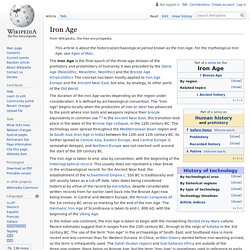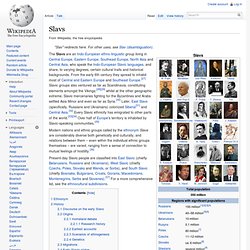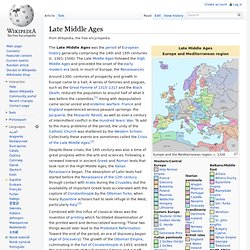

Greenhouse gas. Since the beginning of the Industrial Revolution (taken as the year 1750), the burning of fossil fuels and extensive clearing of native forests has contributed to a 40% increase in the atmospheric concentration of carbon dioxide, from 280 ppm in 1750 to 392.6 ppm in 2012.[5][6] It has now reached 400 ppm in the northern hemisphere.

In the Solar System, the atmospheres of Venus, Mars, and Titan also contain gases that cause a greenhouse effect, though Titan's atmosphere has an anti-greenhouse effect that reduces the warming. Gases in Earth's atmosphere[edit] Greenhouse gases[edit] Greenhouse gases are those that can absorb and emit infrared radiation,[1] but not radiation in or near the visible spectrum.
In order, the most abundant greenhouse gases in Earth's atmosphere are: Non-greenhouse gases[edit] Although contributing to many other physical and chemical reactions, the major atmospheric constituents, nitrogen (N 2), oxygen (O 2), and argon (Ar), are not greenhouse gases. ) (all in kg/s): Iron Age. Archaeological period The Iron Age is the final epoch of the three-age division of the prehistory and protohistory of humanity.

It was preceded by the Stone Age (Paleolithic, Mesolithic, Neolithic, and Chalcolithic) and the Bronze Age. The concept has been mostly applied to Europe and the Ancient Near East, and, by analogy, also to other parts of the Old World. The duration of the Iron Age varies depending on the region under consideration. Ancient Rome. In its approximately 12 centuries of existence, Roman civilization shifted from a monarchy to a classical republic and then to an increasingly autocratic empire.

Through conquest and assimilation, it came to dominate Southern and Western Europe, Asia Minor, North Africa, and parts of Northern and Eastern Europe. Rome was preponderant throughout the Mediterranean region and was one of the most powerful entities of the ancient world. It is often grouped into "Classical Antiquity" together with ancient Greece, and their similar cultures and societies are known as the Greco-Roman world. Ancient Roman society has contributed to modern government, law, politics, engineering, art, literature, architecture, technology, warfare, religion, language and society.
A civilization highly developed for its time, Rome professionalized and expanded its military and created a system of government called res publica, the inspiration for modern republics[8][9][10] such as the United States and France. Migration Period. Slavs. The Slavs are an Indo-European ethno-linguistic group living in Central Europe, Eastern Europe, Southeast Europe, North Asia and Central Asia, who speak the Indo-European Slavic languages, and share, to varying degrees, certain cultural traits and historical backgrounds.

From the early 6th century they spread to inhabit most of Central and Eastern Europe and Southeast Europe.[27] Slavic groups also ventured as far as Scandinavia, constituting elements amongst the Vikings;[28][29] whilst at the other geographic extreme, Slavic mercenaries fighting for the Byzantines and Arabs settled Asia Minor and even as far as Syria.[30] Later, East Slavs (specifically, Russians and Ukrainians) colonized Siberia[31] and Central Asia.[32] Every Slavic ethnicity has emigrated to other parts of the world.[33][34] Over half of Europe's territory is inhabited by Slavic-speaking communities.[35] Ethnonym[edit] European countries where a Slavic language is the official one on the entire territory. High Middle Ages. Late Middle Ages. The Late Middle Ages was the period of European history generally comprising the 14th and 15th centuries (c. 1301–1500).

The Late Middle Ages followed the High Middle Ages and preceded the onset of the early modern era (and, in much of Europe, the Renaissance). Around 1300, centuries of prosperity and growth in Europe came to a halt. Early modern period. Modern history. Modern history, also referred to as the modern period or the modern era, is the historiographical approach to the timeframe after the post-classical era (known as the Middle Ages).[1][2] Modern history can be further broken down into the early modern period and the late modern period after the French Revolution and the Industrial Revolution.

Contemporary history is the span of historic events that are immediately relevant to the present time. The modern era began approximately in the 16th century.[3][4] The study of modern history[edit] Some events, while not without precedent, show a new way of perceiving the world. The concept of modernity interprets the general meaning of these events and seeks explanations for major developments. Subatlantic. History and stratigraphy[edit] The term subatlantic was first introduced in 1889 by Rutger Sernander[4] to differentiate it from Axel Blytt's atlantic.[5] It follows upon the previous subboreal.

According to Franz Firbas (1949) and Litt et al. (2001) it consists of the pollen zones IX and X.[6][7] This corresponds in the scheme of Fritz Theodor Overbeck to the pollen zones XI and XII.[8] In climate stratigraphy the subatlantic is usually subdivided into an older subatlantic and a younger subatlantic. The older subatlantic corresponds to pollen zone IX (or XI) characterized in central and northern Europe by beech or oak-beech forests, the younger subatlantic to pollen zone X (or XII).
In eastern Germany Dietrich Franke subdivides the subatlantic into four stages (from young to old):[9] Ages[edit] The beginning of the subatlantic is usually defined as 2,400 calendar years BP or 450 BC. Climatic evolution[edit]